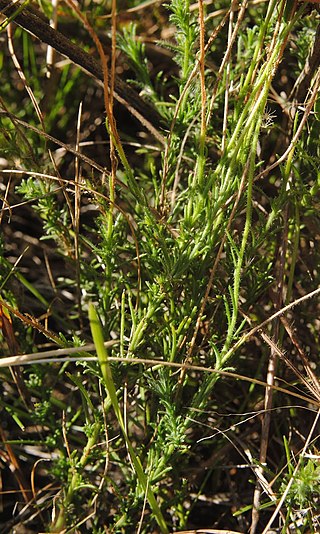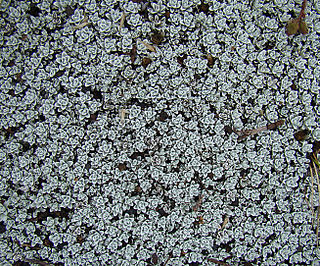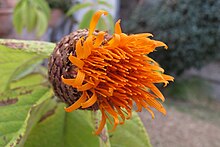
Grindelia (gumweed) is a genus of plants native to the Americas belonging to the family Asteraceae. The genus was named for Latvian botanist David Hieronymus Grindel, 1776–1836.

Trixis is a genus of shrubs in the family Asteraceae, native to North and South America including the West Indies.
Aphanactis is a genus of flowering plants in the family Asteraceae.

Barnadesia is a genus of flowering plants in the aster family, Asteraceae. It is native to South America, where it is distributed from Colombia to northern Argentina, with most species occurring in the Andes. Common names include clavelillo, chivo caspi, espino de gato, and espino santo.

Jungia is a genus of flowering plants in the family Asteraceae. It is native mostly to South America, with one widespread species extending its range into Central America and southern Mexico.

Pseudogynoxys is a genus of flowering plant in the groundsel tribe within the sunflower family, native to North and South America.

Gutierrezia is a genus of flowering plants in the family Asteraceae, native to western North America and western South America. Plants of this genus are known generally as snakeweeds or matchweeds. Some species have been called greasewood. They are annual or perennial plants or subshrubs with yellow or white flowers.

Hysterionica is a genus of flowering plants in the family Asteraceae.

Laennecia or Laënnecia is a genus of flowering plants in the family Asteraceae. The plants are native to Mesoamerica, South America, and the southwestern United States. Common name is "horseweed."

Podocoma is a genus of South American plants in the tribe Astereae within the family Asteraceae.

Chersodoma is a genus of South American flowering plants in the daisy family. Members of this genus or dioecious shrubs or subshrubs.
Duseniella is a genus of Argentine flowering plants in the family Asteraceae.

Heterosperma is a genus of flowering plants in the sunflower family, native to North and South America.
Synedrellopsis is a genus of South American plants in the tribe Heliantheae within the family Asteraceae.
Paleaepappus is a genus of flowering plants in the aster tribe within the sunflower family.

Parastrephia is a genus of South American plants in the tribe Astereae within the family Asteraceae.

Belloa is a genus of South American flowering plants in the sunflower family.
Berroa is a monotypic genus of flowering plants in the aster family, Asteraceae, containing the single species Berroa gnaphalioides. It is native to South America.

Cyclolepis is a monotypic genus of flowering plants in the family Asteraceae. The sole species, Cyclolepis genistoides, is native to South America, where it occurs in Argentina, Chile, Paraguay, and possibly Bolivia. Its common names include matorro negro.

Bidens triplinervia is a Latin American species of flowering plants in the sunflower family. It is native to Mesoamerica and South America, from Chihuahua State in northern Mexico to Jujuy Province in northern Argentina.















